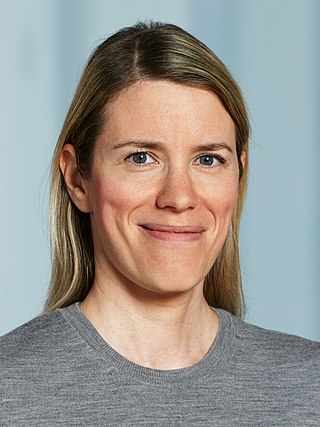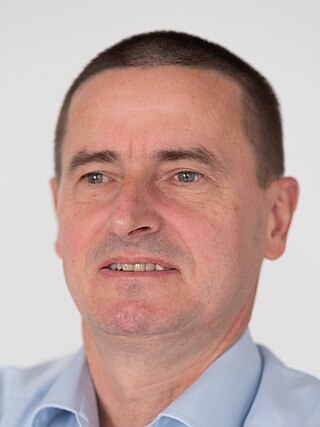The Association for Computing Machinery (ACM) is a US-based international learned society for computing. It was founded in 1947 and is the world's largest scientific and educational computing society. The ACM is a non-profit professional membership group, reporting nearly 110,000 student and professional members as of 2022. Its headquarters are in New York City.

SIGGRAPH is an annual conference centered around computer graphics organized by ACM, starting in 1974. The main conference is held in North America; SIGGRAPH Asia, a second conference held annually, has been held since 2008 in countries throughout Asia.

Non-photorealistic rendering (NPR) is an area of computer graphics that focuses on enabling a wide variety of expressive styles for digital art, in contrast to traditional computer graphics, which focuses on photorealism. NPR is inspired by other artistic modes such as painting, drawing, technical illustration, and animated cartoons. NPR has appeared in movies and video games in the form of cel-shaded animation as well as in scientific visualization, architectural illustration and experimental animation.

The Courant Institute of Mathematical Sciences is the mathematics research school of New York University (NYU). Founded in 1935, it is named after Richard Courant, one of the founders of the Courant Institute and also a mathematics professor at New York University from 1936 to 1972, and serves as a center for research and advanced training in computer science and mathematics. It is located on Gould Plaza next to the Stern School of Business and the economics department of the College of Arts and Science.

Mesh generation is the practice of creating a mesh, a subdivision of a continuous geometric space into discrete geometric and topological cells. Often these cells form a simplicial complex. Usually the cells partition the geometric input domain. Mesh cells are used as discrete local approximations of the larger domain. Meshes are created by computer algorithms, often with human guidance through a GUI, depending on the complexity of the domain and the type of mesh desired. A typical goal is to create a mesh that accurately captures the input domain geometry, with high-quality (well-shaped) cells, and without so many cells as to make subsequent calculations intractable. The mesh should also be fine in areas that are important for the subsequent calculations.
Sketch-based modeling is a method of creating 3D models for use in 3D computer graphics applications. Sketch-based modeling is differentiated from other types of 3D modeling by its interface - instead of creating a 3D model by directly editing polygons, the user draws a 2D shape which is converted to 3D automatically by the application.
Eurographics is a Europe-wide professional computer graphics association. The association supports its members in advancing the state of the art in computer graphics and related fields such as multimedia, scientific visualization and human–computer interaction.
ACM SIGACT or SIGACT is the Association for Computing Machinery Special Interest Group on Algorithms and Computation Theory, whose purpose is support of research in theoretical computer science. It was founded in 1968 by Patrick C. Fischer.
In 3D computer graphics, Potentially Visible Sets are used to accelerate the rendering of 3D environments. They are a form of occlusion culling, whereby a candidate set of potentially visible polygons are pre-computed, then indexed at run-time in order to quickly obtain an estimate of the visible geometry. The term PVS is sometimes used to refer to any occlusion culling algorithm, although in almost all the literature, it is used to refer specifically to occlusion culling algorithms that pre-compute visible sets and associate these sets with regions in space. In order to make this association, the camera's view-space is typically subdivided into regions and a PVS is computed for each region.
GraphiCon is the largest International conference on computer graphics and computer vision in the countries of the former Soviet Union.

Computer graphics is a sub-field of computer science which studies methods for digitally synthesizing and manipulating visual content. Although the term often refers to the study of three-dimensional computer graphics, it also encompasses two-dimensional graphics and image processing.
Chandrajit Bajaj is an American computer scientist. He is a professor of computer science at the University of Texas at Austin holding the Computational Applied Mathematics Chair in Visualization and is the director of the Computational Visualization Center, in the Institute for Computational Engineering and Sciences (ICES).
Leif Kobbelt is a German university professor for Computer Science with a specialization in Computer Graphics. Since 2001 he is the head of the Institute for Computer Graphics and Multimedia at RWTH Aachen university.
P. J. Narayanan is a professor at the International Institute of Information Technology, Hyderabad, and the institute's current director since April 2013. He is known for his work in computer vision, computer graphics, and parallel computing on the GPU.

Bedrich Benes is a computer scientist and a researcher in computer graphics.
IEEE Transactions on Visualization and Computer Graphics is a peer-reviewed scientific journal published by the IEEE Computer Society. It covers subjects related to computer graphics and visualization techniques, systems, software, hardware, and user interface issues. TVCG has been considered the top journal in the field of visualization.
Shape Modeling International (SMI), also known as International Conference on Shape Modeling and Applications is an annual symposium whose goal is to promote the dissemination of new mathematical theories and novel computational techniques for modeling, simulating, and processing digital shape representations. Initiated in 1997 by Tosyiasu L. Kunii and Bianca Falcidieno, the symposium became an annual event in 2001 after its merge with the Eurographics / ACM SIGGRAPH Workshop on Implicit Surfaces. The venue of the symposium rotates in turn among Asia, Europe and America.

Olga Sorkine-Hornung is a professor of Computer Science at ETH Zurich working in the fields of computer graphics, geometric modeling and geometry processing. She has received multiple awards, including the ACM SIGGRAPH Significant New Researcher Award in 2011.
Marc Alexa is a professor of computer science at TU Berlin working in the fields of computer graphics, geometric modeling and geometry processing.

Eduard Gröller' is an Austrian computer scientist and professor at the Technische Universität Wien.







